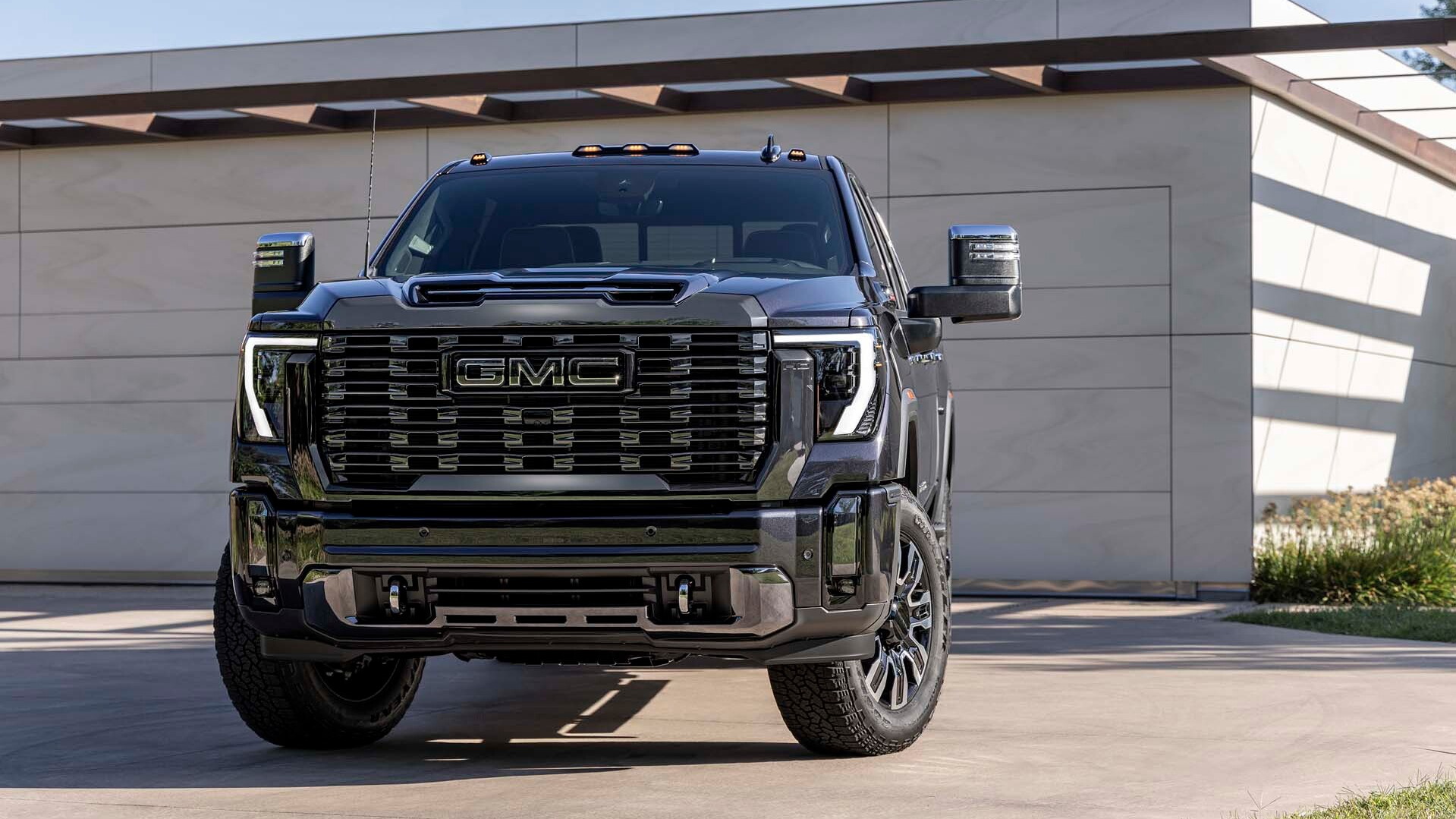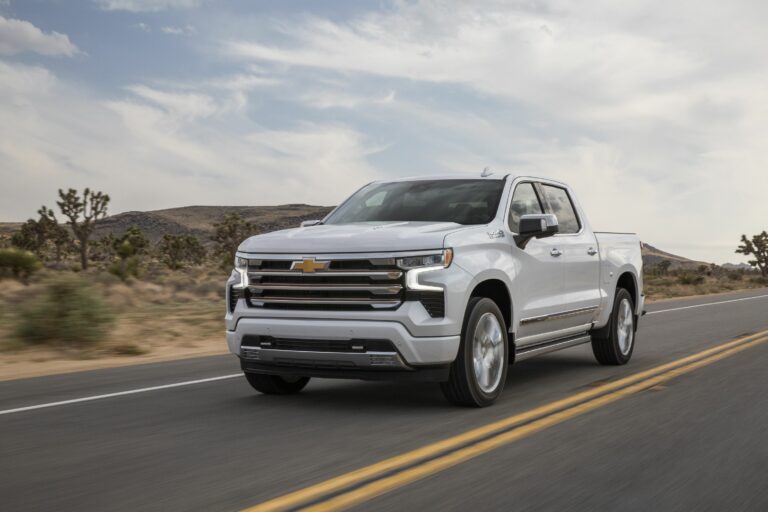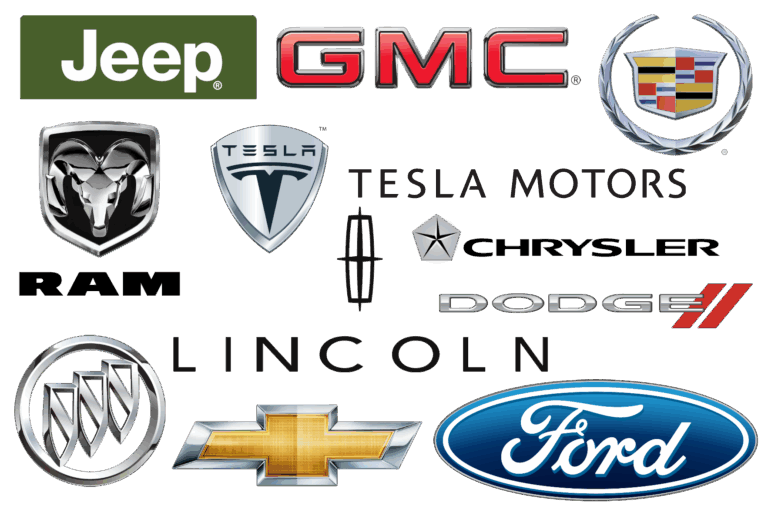Will a GMC Truck Bed Cap Fit Your Truck? A Comprehensive Guide to Compatibility
Will a GMC Truck Bed Cap Fit Your Truck? A Comprehensive Guide to Compatibility cars.truckstrend.com
For many truck owners, a truck bed cap (also known as a camper shell, truck topper, or simply a "cap") is an indispensable accessory. It transforms the open bed of a pickup into a secure, weather-protected, and often more organized storage area, making your truck more versatile for work, recreation, or everyday life. Whether you’re hauling tools, camping gear, groceries, or just want to keep your cargo safe from the elements and prying eyes, a truck cap offers unparalleled utility.
However, a common question that arises, particularly for those looking to buy a used cap or transfer one between vehicles, is: "Will a GMC cap fit my truck?" The answer, unfortunately, is rarely a straightforward "yes" or "no." It’s a nuanced topic dictated by precise measurements, design variations, and manufacturing specifics. This comprehensive guide will delve into the intricacies of truck cap compatibility, helping you understand the critical factors involved and how to determine if that "GMC cap" is the right fit for your rig.
Will a GMC Truck Bed Cap Fit Your Truck? A Comprehensive Guide to Compatibility
Understanding Truck Bed Caps and GMC’s Role
Before diving into fitment, let’s clarify what we mean by a "GMC cap." While GMC is a prominent truck manufacturer, they don’t typically produce the truck caps themselves. Instead, a "GMC cap" usually refers to an aftermarket truck bed cap that was specifically designed and molded to fit a particular GMC Sierra or Canyon truck model. Reputable aftermarket manufacturers like Leer, ARE, SnugTop, and Century produce a vast array of caps tailored to various truck makes and models. These caps are engineered to match the specific contours, dimensions, and styling of the truck bed they are intended for.
The challenge arises because truck beds, even among models from the same manufacturer or within the same brand over different model years, are not universally identical. Subtle differences in length, width, rail profiles, and tailgate designs can make a seemingly minor discrepancy a deal-breaker for proper cap fitment.
The Critical Factors for Fitment: Why It’s Not Always Simple
When assessing whether a "GMC cap" will fit "a truck," you must consider several crucial dimensions and design elements. Overlooking even one of these can lead to a poor fit, compromising weather sealing, security, aesthetics, and potentially causing damage.
-
Truck Make and Model: This is the most fundamental factor. Truck beds vary significantly between different manufacturers (e.g., Ford, Ram, Toyota, Nissan, Chevrolet, GMC). Each brand has its unique bed design, rail profile, and tailgate configuration. A cap designed for a Ford F-150 will almost certainly not fit a GMC Sierra, and vice-versa.

- Key Insight: Chevrolet and GMC Interchangeability: One common exception to the "different make, different cap" rule applies to Chevrolet and GMC trucks. Since both brands fall under the General Motors umbrella and often share platforms and core designs, a cap designed for a Chevrolet Silverado of a specific generation will very often fit a GMC Sierra of the same generation and bed length. However, always verify measurements, as subtle trim differences or special editions might exist.
-
Truck Model Year (Generation): Truck manufacturers frequently redesign their vehicles, and these redesigns almost always include changes to the truck bed. Even if you’re looking at a GMC cap for a GMC truck, a cap from an older generation Sierra (e.g., 2007-2013) will not fit a newer generation (e.g., 2019-present) due to changes in bed dimensions, tailgate designs, and cab profiles. Always match the cap’s intended model year range with your truck’s model year.
-
Bed Length: Trucks come with various bed lengths: short bed (typically around 5.5 ft), standard bed (around 6.5 ft), and long bed (around 8 ft). A cap is custom-molded to fit one specific bed length. A cap for a short bed will not fit a standard bed, and vice-versa. This is a non-negotiable measurement.
-
Bed Width and Rail Profile: This is perhaps the most critical and often overlooked dimension. Truck caps sit directly on the bed rails. The cap’s frame is molded to match the exact width and the unique contour of these rails. Even a slight difference in width (an inch or less) or the shape of the rail (e.g., rounded vs. flat, presence of caps/linings) can prevent the cap from sitting flush, leading to gaps, leaks, and an insecure fit. Precision here is paramount.
-
Cab Height and Roofline: While not always a strict fitment issue, the cap’s front profile is often designed to align aesthetically and aerodynamically with the truck’s cab height and roofline. A cap designed for a standard cab truck might look odd or create drag on a crew cab with a higher roof. Conversely, a cap for a higher-cab truck might sit too tall on a lower-profile cab.
-
Tailgate Design: The rear of the truck cap is designed to seal against the tailgate. Modern tailgates can have unique features like steps, power-assist mechanisms, or integrated spoilers. The cap’s rear door and sealing mechanism must be compatible with your truck’s tailgate to ensure a watertight seal and proper closure.
Measuring for Success: How to Determine Compatibility
The only way to definitively know if a "GMC cap" will fit "your truck" is to take precise measurements of both.
Measurements You Need from Your Truck Bed:
- Inside Bed Length: Measure from the inside of the bulkhead (the wall closest to the cab) to the inside of the closed tailgate. Measure along the top of the bed rails.
- Inside Bed Width: Measure the width of the bed at several points:
- Near the bulkhead.
- In the middle of the bed.
- Near the tailgate.
- Also, measure the exact width across the top of your bed rails. This is crucial for the cap’s base frame.
- Cab Height: Measure the vertical distance from the top of your bed rail to the highest point of your truck’s cab roof. This helps assess aesthetic alignment.
Measurements You Need from the Truck Cap:
- Cap Base Length: Measure the length of the cap’s bottom frame (the part that sits on the bed rails).
- Cap Base Width: Measure the width of the cap’s bottom frame at the front, middle, and rear. This is the most critical measurement for rail compatibility.
- Cap Height (Front): Measure the height of the cap at the front, from its base to its highest point. This will give you an idea of its cab alignment.
Important Considerations:
- Precision is Key: Even a half-inch difference can lead to significant problems. Use a reliable tape measure.
- Bring Your Truck: If possible, take your truck to the seller of a used cap. A quick test fit is the best way to verify compatibility.
- Account for Bed Liners/Caps: If your truck has an aftermarket bed liner that goes over the bed rails, or plastic bed rail caps, these can alter the effective width and contour of your bed, potentially affecting fit.
Common Scenarios and Expected Outcomes
- GMC Cap to Same GMC Model/Generation (e.g., 2015 Sierra cap on a 2017 Sierra): Highest chance of a perfect direct fit, assuming bed length is identical.
- GMC Cap to Same GMC Model, Different Generation (e.g., 2010 Sierra cap on a 2020 Sierra): Highly unlikely to fit well, if at all, due to significant design changes.
- GMC Cap to Chevrolet Silverado (Same Generation/Bed Length): High probability of a good fit, as these trucks often share bed dimensions. Always verify measurements.
- GMC Cap to Other Makes (Ford, Ram, Toyota, etc.): Extremely unlikely to fit due to fundamentally different bed designs and dimensions. Do not attempt unless you’re looking at major custom fabrication.
- GMC Cap to Different Bed Length: Will absolutely not fit. A 6.5ft cap cannot go on a 5.5ft bed, and vice-versa.
Challenges and Potential Solutions
Even with careful measurement, sometimes minor issues can arise.
- Gaps and Leaks: If there are small gaps, especially around the tailgate or bed rails, you can often mitigate them with additional weather stripping, foam seals, or clear silicone sealant. However, this is a workaround, not a solution for a fundamentally ill-fitting cap.
- Aesthetic Mismatch: If the cap’s height or lines don’t align with your cab, there’s little you can do beyond accepting the look.
- Mounting Issues: Most caps use clamps to secure to the bed rails. If the cap’s frame doesn’t sit perfectly, the clamps might not grip securely. Ensure all clamps are properly engaged and tightened.
- Damaged Seals: Over time, the rubber seals on a cap can crack or degrade. These are replaceable and crucial for waterproofing.
- Professional Help: For significant fitment issues or complex installations (e.g., wiring for interior lights or third brake lights), a professional truck accessory shop can offer expertise, custom sealing solutions, or even minor modifications (though major modifications are usually cost-prohibitive).
Tips for Buying a Used Truck Cap
Buying used can save money, but it requires extra vigilance:
- Measure, Measure, Measure: As emphasized, measure your truck’s bed and the cap thoroughly.
- Inspect for Damage: Look for cracks in the fiberglass or aluminum, especially around stress points. Check the glass for chips or cracks.
- Check Seals and Weatherstripping: Ensure they are intact and pliable. Replacements can add to the cost.
- Verify Hardware: Make sure all latches, locks, hinges, and mounting clamps are present and in working order.
- Test the Gas Struts: The struts that hold the rear door open should be strong enough to support the door’s weight.
- Confirm Wiring: If the cap has a third brake light or interior light, check the wiring for damage and ensure it’s compatible with your truck’s electrical system (often requires a simple splice).
- Ask for the Original Truck Information: Knowing the exact year, make, model, and bed length of the truck the cap came off of is invaluable.
- Don’t Buy Sight Unseen: Always inspect a used cap in person. Ideally, test-fit it on your truck before purchase.
Practical Advice and Actionable Insights
- Prioritize a Snug Fit: A cap that doesn’t fit properly will lead to leaks, security vulnerabilities, and constant frustration. Don’t compromise on fit for a lower price.
- New vs. Used: While used caps are cheaper, new caps offer guaranteed fitment for your specific truck, a warranty, and often customization options (color matching, windows, interior features).
- Aesthetics Matter: A well-fitting cap enhances your truck’s appearance. A poorly fitting one can detract from it.
- Research Online: Truck forums and manufacturer websites often have detailed bed dimensions and compatibility charts for different models and years.
Concluding Summary
The question "Will a GMC cap fit a truck?" is complex, hinging on precise compatibility between the cap’s design and your truck’s bed dimensions. While caps designed for the same generation of Chevrolet Silverado and GMC Sierra often interchange, fitting a cap from a different make, model, or even a different generation of GMC truck is highly improbable without significant issues.
The key to success lies in meticulous research, accurate measurement of both your truck bed and the potential cap, and a clear understanding of the critical factors like make, model year, bed length, and rail profile. By taking these steps, you can confidently determine if that "GMC cap" is indeed the perfect fit for your truck, ensuring years of secure, weather-protected, and aesthetically pleasing utility.
Truck Bed Cap Pricing Guide (General Estimates)
The price of a truck bed cap can vary significantly based on material, features, brand, and whether it’s new or used. This table provides general price ranges to give you an idea of what to expect.
| Category | Type of Cap (Material) | Key Features | New Price Range (USD) | Used Price Range (USD) | Installation Cost (USD) |
|---|---|---|---|---|---|
| Entry-Level | Aluminum (Basic) | Bare bones, utilitarian, lightweight | $800 – $1,500 | $300 – $700 | $100 – $200 |
| Fiberglass (Basic) | Single color (white/black), basic windows, no frills | $1,500 – $2,500 | $500 – $1,000 | $100 – $200 | |
| Mid-Range | Fiberglass (Color-Matched) | Painted to match truck, sliding/tinted windows, interior light, carpeted headliner | $2,500 – $3,500 | $800 – $1,500 | $150 – $250 |
| Soft Folding/Roll-up Tonneau | Not a full cap, but a bed cover alternative | $300 – $800 | $100 – $400 | $50 – $150 | |
| Premium/Specialty | Fiberglass (Advanced Features) | Power locks, remote entry, heavy-duty roof rack, integrated lighting, specific utility designs | $3,500 – $5,000+ | $1,200 – $2,500+ | $200 – $300+ |
| Hard Folding/Retractable Tonneau | Durable, secure, often low-profile | $800 – $2,000+ | $400 – $1,000+ | $100 – $250 | |
| Custom/Commercial | Reinforced Fiberglass/Aluminum | Heavy-duty construction, specialized compartments, ladder racks, toolboxes | $4,000 – $8,000+ | (Variable, Less Common) | $300 – $500+ |
Note: Prices are estimates and can vary based on brand, region, dealer markups, and specific features. Used prices are highly dependent on condition, age, and demand.
Frequently Asked Questions (FAQ)
Q1: Can a cap from a Chevrolet Silverado fit a GMC Sierra?
A1: In many cases, yes, if they are the same generation (model year range) and have the same bed length. Chevrolet and GMC trucks often share the same bed dimensions due to being built on the same platforms. Always measure both to confirm.
Q2: Will a short bed cap fit a standard bed truck?
A2: No, absolutely not. Truck caps are length-specific. A cap designed for a 5.5-foot short bed will be too short for a 6.5-foot standard bed, leaving a large gap.
Q3: My truck bed has a drop-in bed liner that covers the rails. Will this affect cap fitment?
A3: Yes, it can. Drop-in bed liners that extend over the bed rails can change the effective width and contour of the bed, potentially preventing the cap from sitting flush or sealing properly. It’s often recommended to remove these types of liners or trim them carefully for proper cap installation. Spray-in liners typically do not affect fitment.
Q4: Can I modify a truck cap to make it fit if it’s slightly off?
A4: Minor adjustments, like adding extra weather stripping for small gaps, are possible. However, significant modifications (e.g., cutting fiberglass to change width or length, reshaping the base) are extremely difficult, often costly, and can compromise the cap’s structural integrity, weather sealing, and appearance. It’s generally not recommended.
Q5: Does the specific year of the truck matter much for cap compatibility?
A5: Yes, significantly. Truck manufacturers frequently redesign their truck beds with new generations (typically every 5-8 years). Even minor changes in bed width, rail contour, or tailgate design between model years within the same generation can affect fit, let alone changes between different generations. Always aim for a cap designed for your truck’s exact generation and bed length.
Q6: Where can I find the precise dimensions for my truck bed?
A6: You can often find detailed bed dimensions in your truck’s owner’s manual, on the manufacturer’s official website, or by searching truck-specific forums and online communities. However, always double-check with your own measurements.





